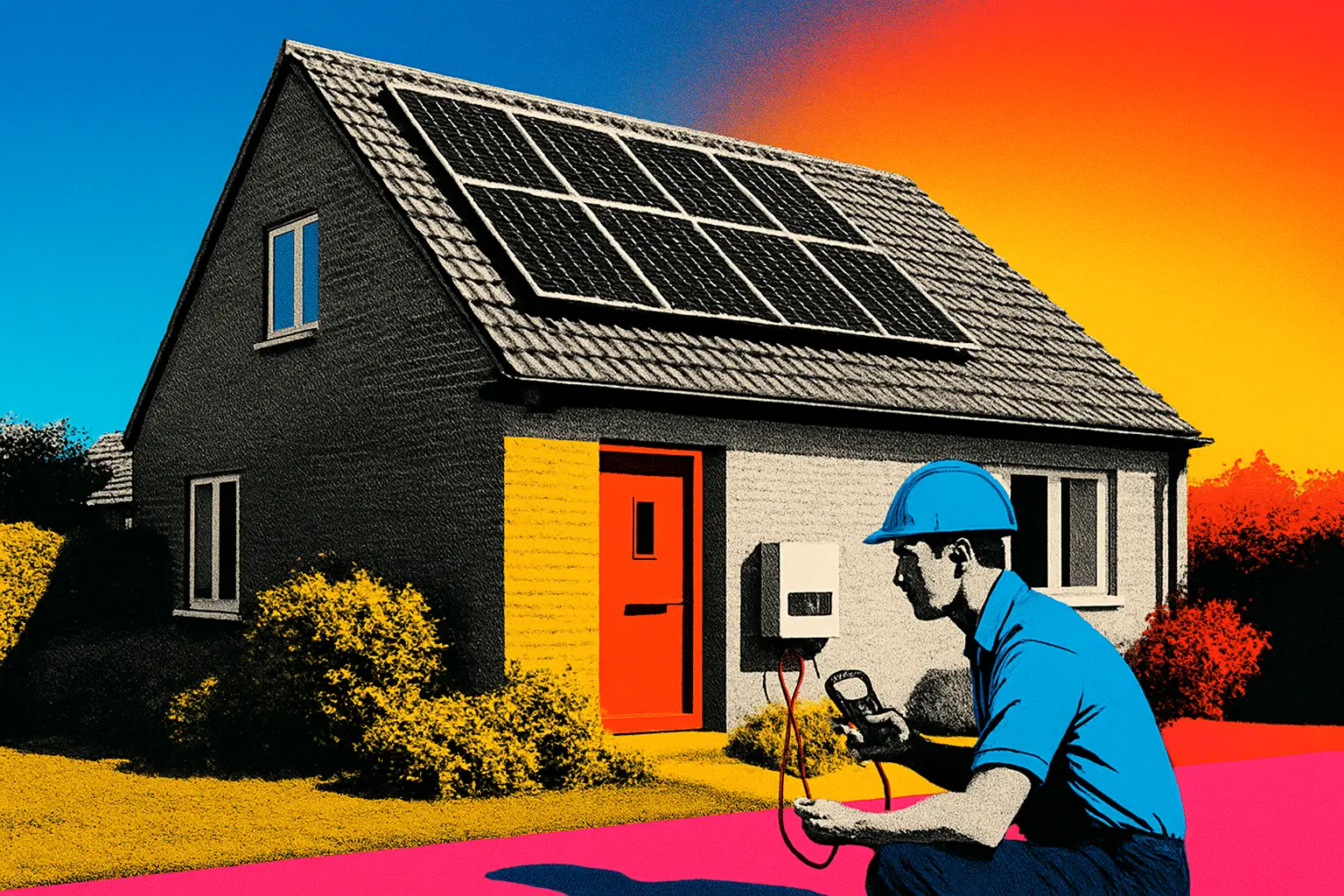Solar panels Home services: do you really need it?
Solar panels are moving mainstream across Great Britain. Here is a measured, practical guide to costs, savings, eligibility and the steps to get MCS-certified solar installed on your home.
Why UK homes are going big on solar now
A record first half of 2025 has pushed rooftop solar into the mainstream across Great Britain. Installations are up sharply, generation records keep tumbling, and new builds increasingly include panels as standard. For many households, solar is shifting from a nice-to-have to a sensible hedge against rising energy costs.
What this guide helps you decide
If you are weighing up solar at your UK address, this guide explains the essentials in plain terms: what panels do, how they save you money, what they cost, and how long payback might take. It also covers grants, building rules, and how to choose certified installers so you can proceed with confidence.
Key ideas to get straight
- Solar photovoltaic panels convert daylight into electricity for your home. Generation peaks at midday and in summer, but modern systems perform year round.
- A typical UK domestic system is 3 kWp to 6 kWp, often paired with a battery to store surplus power for evening use.
- Smart Export Guarantee lets you earn for surplus electricity you export to the grid. Tariffs vary by supplier.
- Building regulations are a major driver. Stricter efficiency rules mean many new homes include solar as standard, particularly under Part L in England and equivalent standards in Scotland.
- Certification matters. MCS certification for both products and installers protects performance, consumer rights, and your ability to access export payments.
- The market is mature. Installed capacity has reached roughly 18 GW across the UK, with more than 1.7 million systems in place and rapid additions in 2025.
Understanding payback is not just about pence per kWh - it is about how much of your own usage you can cover with solar and storage.
Your options on the table
System types
- Panels only: lowest cost, rely on daytime self-consumption and export income.
- Panels plus battery: higher upfront cost, but boosts self-consumption and savings by shifting solar to evenings.
- Integrated on new build: designed in from day one under tighter energy rules. Often better aesthetics and wiring.
Size and roof considerations
- Space and orientation: South-facing roof with minimal shading is ideal, but east-west arrays can give broader daytime coverage.
- Typical sizing: 3-4 kWp for smaller homes, 5-6 kWp for larger families or EV owners.
Ownership and finance
- Outright purchase: most control and best lifetime savings.
- Green loans or low-rate finance: spread costs with interest factored into payback.
- Developer included on new builds: often rolled into mortgage costs.
| Option | Typical size | Indicative upfront cost | Battery included | Who it suits |
|---|---|---|---|---|
| Panels only | 3-4 kWp | £4,500-£7,000 | No | Daytime-at-home users, smaller budgets |
| Panels + battery | 4-6 kWp + 5-10 kWh | £8,000-£12,500 | Yes | Families, EV owners, evening use |
| New-build integrated | 2.5-5 kWp | Included in sale price | Sometimes | Buyers of high-efficiency homes |
Pounds, carbon and payback - what to expect
Installations surged more than 20% in early 2025, with over 57,000 rooftop systems certified in Q1 alone. As scale grows, pricing remains competitive. A typical 4 kWp system may save £350-£600 per year without a battery, depending on usage and tariff. With a battery, savings can rise, especially if you shift more of your own solar into peak times or use smart import tariffs.
- Payback period: commonly 6-10 years for panels only, 8-12 years with batteries, subject to energy prices, export rates and your self-consumption.
- Carbon impact: solar generation in Great Britain rose 32% in early 2025, helping cut grid emissions and reliance on fossil fuels. Your household contributes directly to that shift.
- Market risk: panel prices and export tariffs can change. Choosing reputable, MCS-certified kit and suppliers reduces performance and warranty risks.
Can your home qualify
You do not need a south-facing roof to benefit. East-west splits can be effective and often better match household demand. Key checks include roof strength, shading, access, and whether your property is listed or in a conservation area.
- Planning: most domestic systems are permitted development, but listed buildings or flats may need permissions. Scotland and Wales have similar but distinct rules.
- Metering: a smart meter is recommended for accurate export payments.
- Certification: MCS certification is essential for export and quality assurance, and aligns with the 170,000 certified home renewables installed in the first half of 2025.
- New builds: regulations mean solar is now fitted on over 40% of new homes in England and around 80% in Scotland, often simplifying eligibility.
From quote to switch-on - the simple sequence
- Assess roof, shading and your electricity use profile
- Get 3 MCS installer quotes with clear system designs
- Compare panels, inverter, battery sizes and warranties
- Confirm planning position and any permissions needed
- Finance decision - cash, loan, or mortgage inclusion
- Installation, electrical checks and MCS certification issued
- Register for Smart Export Guarantee with your supplier
- Optimise settings and monitor performance seasonally
Upsides and trade-offs to weigh
Pros:
- Lower bills and greater energy independence
- Export income through Smart Export Guarantee
- Strong policy tailwinds and mature supply chain
- Adds appeal to homes where energy efficiency matters
Cons:
- Upfront cost and roof suitability constraints
- Savings depend on usage patterns and tariffs
- Batteries add cost and have finite lifespans
- Possible permissions for flats or listed properties
Solar adoption is no longer niche - areas like Argyll and Bute, The Cotswolds and Ceredigion are among the standouts, with Wales particularly prominent.
Red flags and fine print
- Overpromised payback: ask for conservative scenarios using your meter data, not generic assumptions.
- Shading not modelled: insist on a shading analysis and panel-level optimisation if needed.
- Missing certifications: ensure MCS for installer and products, plus clear warranty terms for panels and inverter.
- Inverter placement: poor ventilation shortens life. Agree a location that stays within temperature limits.
- Export tariff mismatch: confirm eligibility and rates before commissioning so payments start promptly.
If solar is not a fit today
- Home energy efficiency first: loft and cavity insulation, draught-proofing, low-flow heating controls.
- Heat pumps: pair well with solar for low-carbon heating, often eligible under existing incentives.
- Community or offsite solar: subscription models can support renewables if your roof is unsuitable.
- Time-of-use tariffs: shift usage to cheaper periods to reduce bills without hardware upgrades.
Clear answers to common questions
Q: Do panels work in UK weather?
A: Yes. They generate from daylight, not heat. Output is lower in winter, higher in summer, and modern systems remain effective across Great Britain.
Q: How long do panels and batteries last?
A: Panels typically carry 20-25 year performance warranties. Inverters often 10-12 years. Batteries usually 5-10 year warranties depending on cycles.
Q: Will a battery always improve payback?
A: Not always. Batteries can raise self-consumption but add cost. They help most when you have evening use, EV charging, or high peak tariffs.
Q: What export tariff can I expect?
A: Rates vary by supplier and can change. Compare Smart Export Guarantee offers and check standing charges and payment terms.
Q: Do I need planning permission?
A: Most homes fall under permitted development. Listed buildings, flats, or prominent street-facing arrays may require approval. Check local rules.
Q: Can I install on a small or shaded roof?
A: Possibly. High-efficiency panels and microinverters can help. A shading survey will show realistic output.
Where to go from here
- Gather your last 12 months of electricity bills to understand usage.
- Get at least three MCS-certified quotes with clear yield and payback estimates.
- Consider a battery if you have high evening use or an EV.
- Register early for an export tariff to unlock payments from day one.
Switcha can help you compare certified installers and secure competitive pricing.
Important note
This guide provides general information for GB homeowners and is not financial advice. Payback and savings depend on your property, usage and tariffs. Always seek quotes from MCS-certified installers and check local planning requirements.
Get smarter with your money
Join thousands of people in the UK who are taking control of their financial future

FAQs
Common questions about managing your personal finances
Begin by tracking every expense for one month. Use an app or spreadsheet. No judgment. Just observe your spending patterns.
Cancel unused subscriptions. Cook at home. Compare utility providers. Small changes add up quickly.
Aim for 20% of your income. Start smaller if needed. Consistency matters more than the amount.
Choose reputable apps with strong security. Read reviews. Check privacy policies. Protect your financial data.
Pay bills on time. Keep credit card balances low. Check your credit report annually. Be patient.
Still have questions?
Our team is ready to help you navigate your financial journey
More financial insights
Explore our latest articles on personal finance and money management




